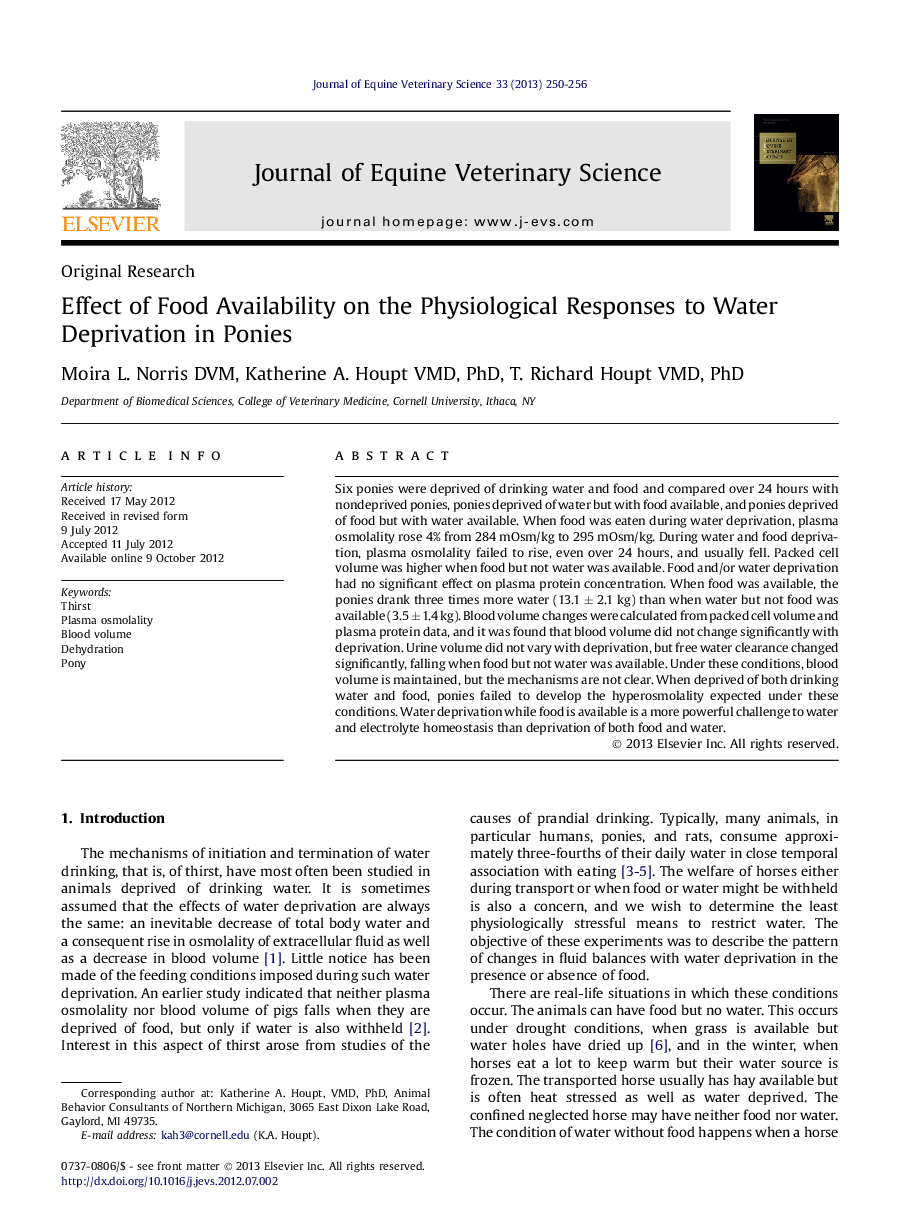| Article ID | Journal | Published Year | Pages | File Type |
|---|---|---|---|---|
| 10961326 | Journal of Equine Veterinary Science | 2013 | 7 Pages |
Abstract
Six ponies were deprived of drinking water and food and compared over 24 hours with nondeprived ponies, ponies deprived of water but with food available, and ponies deprived of food but with water available. When food was eaten during water deprivation, plasma osmolality rose 4% from 284 mOsm/kg to 295 mOsm/kg. During water and food deprivation, plasma osmolality failed to rise, even over 24 hours, and usually fell. Packed cell volume was higher when food but not water was available. Food and/or water deprivation had no significant effect on plasma protein concentration. When food was available, the ponies drank three times more water (13.1 ± 2.1 kg) than when water but not food was available (3.5 ± 1.4 kg). Blood volume changes were calculated from packed cell volume and plasma protein data, and it was found that blood volume did not change significantly with deprivation. Urine volume did not vary with deprivation, but free water clearance changed significantly, falling when food but not water was available. Under these conditions, blood volume is maintained, but the mechanisms are not clear. When deprived of both drinking water and food, ponies failed to develop the hyperosmolality expected under these conditions. Water deprivation while food is available is a more powerful challenge to water and electrolyte homeostasis than deprivation of both food and water.
Related Topics
Life Sciences
Agricultural and Biological Sciences
Animal Science and Zoology
Authors
Moira L. DVM, Katherine A. VMD, PhD, T. Richard VMD, PhD,
